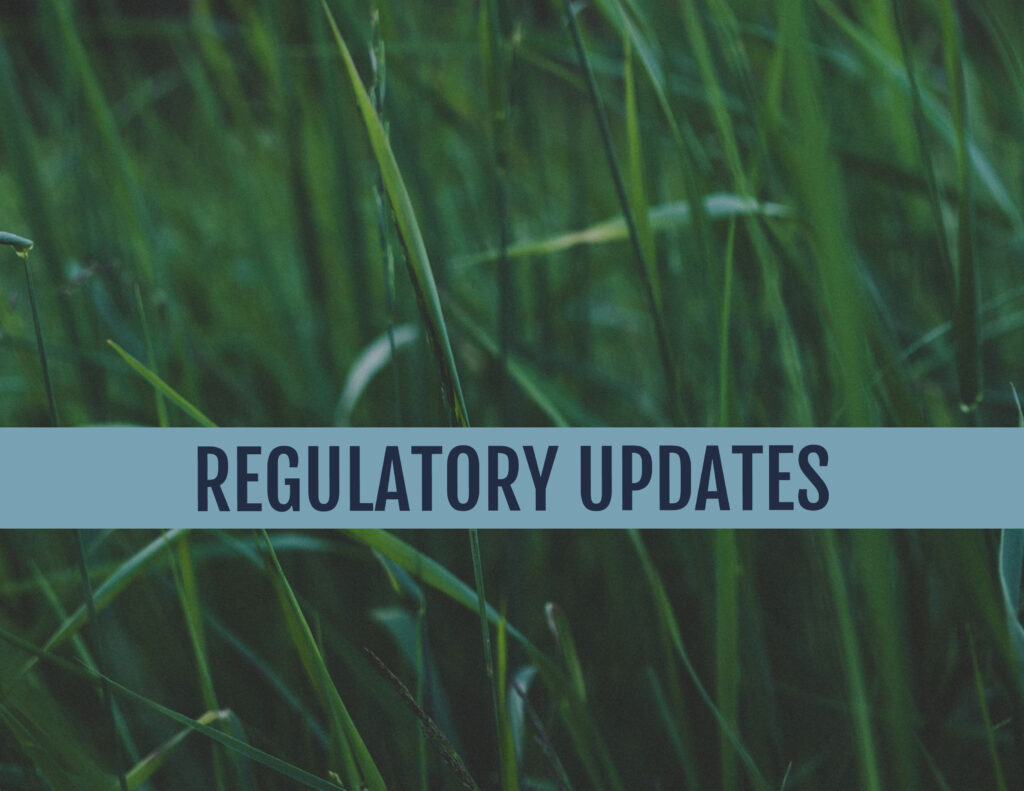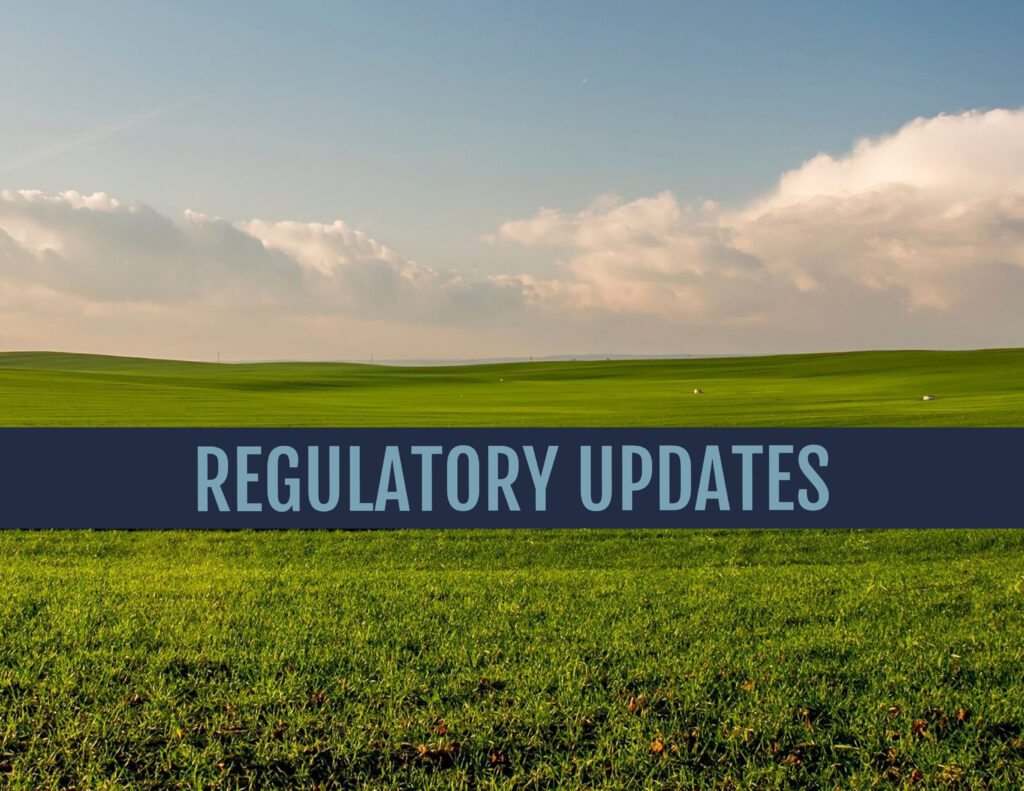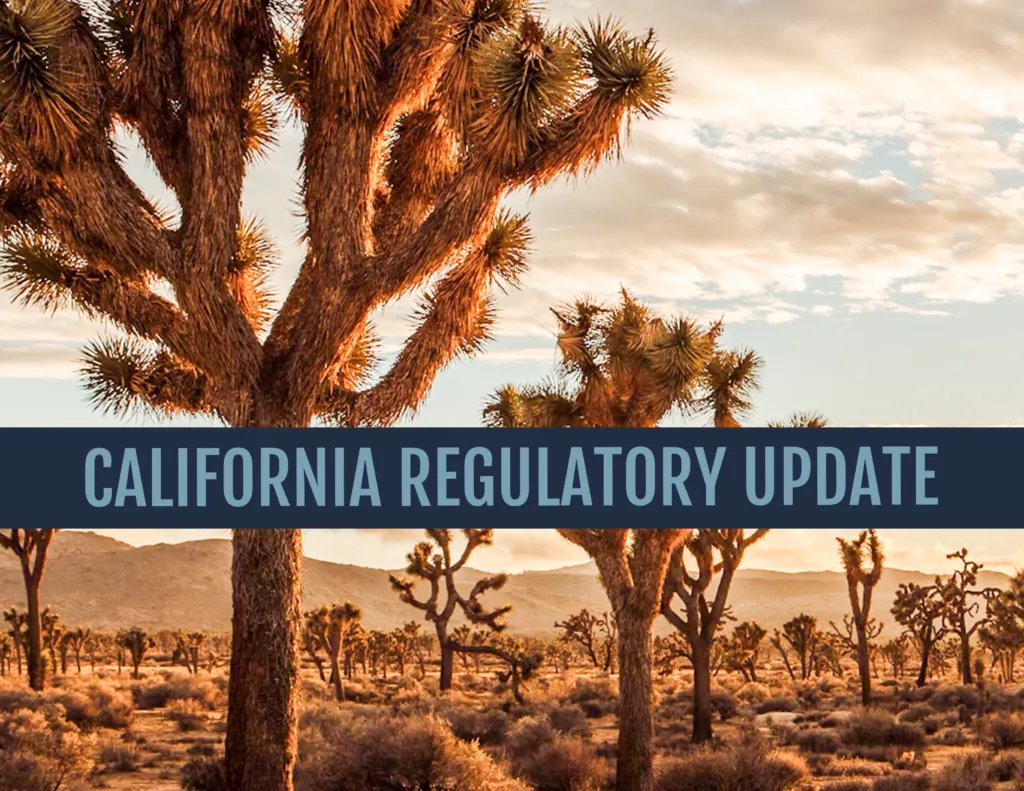
During the second quarter of 2024, there were several regulatory developments involving federal and state agencies. These updates are summarized in the following sections.
FEDERAL REGULATORY UPDATES
United States Army Corps of Engineers: Regulatory Request System
As previously discussed in our Q1 2024 update, the United States (U.S.) Army Corps of Engineers (USACE) launched its new national online application and management platform known as the Regulatory Request System (RRS). This new electronic tool was developed to streamline the permit request process. On May 15, 2024, the USACE announced the ability to electronically submit permit applications through the RRS. In addition to electronic submission capabilities, the RRS allows applicants to submit requests for pre-application meetings, jurisdictional determinations, and more. The RRS can be accessed at the following website: https://rrs.usace.army.mil/rrs.
United States Fish and Wildlife Service: Endangered Species Act Final Rules
As previously discussed in our Q1 and Q2 2023 update, the U.S. Fish and Wildlife Service (USFWS) and the National Oceanic and Atmospheric Administration’s National Marine Fisheries Service, together the “Services,” announced a plan that included revisions to three final rules to improve and strengthen implementation of the federal Endangered Species Act (ESA). On April 5, 2024, the Services finalized the three rules, which are discussed in the Q1 and Q2 2023 update and detailed in the following subsections. These final rules became effective May 6, 2024.
Section 7 Final Rule
This rule refines the Section 7 regulations through the following changes:
- Revises the definition of “environmental baseline” to remove the use of “ongoing” as it can be difficult to determine whether the effects of ongoing federal activities are part of the environmental baseline.
- Removes Section 402.17 “Other provisions,” which provided additional guidance on factors to consider for the two-part test to determine the “effects of the action.”
- Clarifies that the obligation to reinitiate consultation for proposed actions, such as in instances of additional take or new listing of species not originally covered by the incidental take permitting, is on the action agency alone and not the Services.
- Revises the definition of reasonable and prudent measures so that they “may include measures implemented inside or outside of the action area that avoid, reduce, or offset the impact of incidental take.” This revision allows for the Services to require applicants for federal authorizations to implement compensatory mitigation as part of the Section 7 process.
Section 4 Final Rule
This rule includes revisions to the Services’ joint regulations regarding the listing and reclassification of species and designation of critical habitat. Key changes to the rule are as follows:
- Reinstates the prior language affirming that listing determinations are made “without reference to possible economic or other impacts of such determination.”
- Revises the foreseeable future framework to make “reasonable predictions” about the effects to a species in the foreseeable future.
- Removes the requirements for designating unoccupied habitat as critical habitat (i.e., only considering unoccupied areas when occupied areas would be inadequate to ensure the conservation of the species) and clarifies that occupied habitat will be evaluated first when designating critical habitat.
Section 4(d) Final Rule
This rule reinstates the USFWS’ “blanket” Section 4(d) rules, which extends most protections provided to endangered species to those listed as threatened, unless the USFWS adopts a species-specific Section 4(d) rule. In addition, the rule extends exceptions to the regulation by allowing federally recognized tribes to “…aid, salvage, or dispose of threatened species” without obtaining permits.
Council on Environmental Quality: Final Bipartisan Permitting Reform Implementation Rule
On May 1, 2024, the Council on Environmental Quality published its Final Bipartisan Permitting Reform Implementation Rule to revise regulations for implementing the National Environmental Policy Act (NEPA), including the amendments to NEPA in the Fiscal Responsibility Act. The final rule completes the multiphase process that was initiated in 2021. The Phase 1 proposed and final rules were in our Q4 2021 update and Q2 2022 update, and the Phase 2 proposed rule was discussed in our Q3 2023 update.
Changes to how NEPA is implemented in Phase 2 of this process that were not discussed in Insignia’s prior regulatory updates include:
- Clarifying that applicants and contractors can prepare environmental assessments (EAs) and environmental impact statements (EISs), but they still must be independently reviewed by the agencies.
- Requiring agencies to include additional public participation activities, such as providing an opportunity for the public to provide comments on the published draft EAs; notifying the public of NEPA-related hearings, public meetings, and the availability of environmental documents; and making draft EISs available to the public at least 15 days in advance of a public meeting or hearing.
- Encouraging agencies to include a scoping process as part of their NEPA review when an EA is being developed.
- Requiring agencies to identify the “environmentally preferable alternative[s]” in the Draft EIS and Final EIS instead of only in the Record of Decision.
- Ensuring climate change, environmental justice, and other environmental issues are included in agencies’ decision-making processes by referencing climate change and environmental justice throughout the NEPA document and using “cumulative impact” in the definition of “environmental justice”.
The final rule will become effective July 1, 2024, and proposed agency-specific NEPA procedures for implementing NEPA must be published by July 1, 2025.
Bureau of Land Management: Final Rule — Conservation and Landscape Health
The Bureau of Land Management (BLM) published a final rule—Conservation and Landscape Health—in the Federal Register on May 9, 2024, which become effective on June 10, 2024. The final rule establishes policies for the BLM to prioritize the health and resilience of ecosystems across public lands. This will be achieved through protecting the most intact functioning landscapes, restoring degraded habitat and ecosystems, and using science and data, including indigenous knowledge obtained through tribal consultation. The final rule introduces the following changes:
- Applying land health standards to all BLM-managed public lands and uses, not just grazing.
- Establishing “conservation” as a land use within the Federal Land Policy and Management Act’s multiple-use framework and codifies tools to support this land use.
- Revising regulations to better prioritize the designation and protection of areas of critical environmental concern (ACECs), which are areas designated based on their important resources and unique scenic landscapes, including areas needed to protect people from hazards.
The final rule also recognizes that public land conservation is incompatible with a “one size fits all” approach so the rule identifies multiple conservation tools to be used where appropriate, including protection of intact landscapes, restoration and mitigation planning, and ACEC designation. Relevant updates to establishing new ACECs include considering and evaluating older forests and woodlands, including pinyon and juniper woodlands, for protection and expansion as possible ACECs, as well as the ability to identify potential ACECs outside of the typical land use planning process while providing temporary management until the potential ACEC can be officially designated.
Bureau of Land Management: Final Rule — Rights-of-Way, Leasing, and Operations for Renewable Energy
The BLM published a final rule—Rights-of-Way, Leasing, and Operations for Renewable Energy—in the Federal Register on May 1, 2024. The final rule became effective on July 1, 2024. The final rule reduces the acreage rent and capacity fees of solar and wind energy right-of-way (ROW) authorizations on public land to encourage developers to construct additional solar and wind energy projects.
In addition, the final rule also institutes a new rate-setting process (i.e., the greater of either an acreage rent or a capacity fee). The BLM will set the per-acre rate and the megawatt-hour rate when issuing a grant or lease for solar or wind energy development, and the rates will be adjusted annually with an annual adjustment factor set at the beginning of the grant or lease term.
Lastly, the final rule provides the BLM with increased flexibility to review and process applications for proposed solar and wind energy generation ROWs through both a competitive and non-competitive processes both inside and outside of Designated Leasing Areas.
Federal Energy Regulatory Commission: Final Rule Order No. 1920
The Federal Energy Regulatory Commission (FERC) issued Order No. 1920, Building for the Future Through Electric Regional Transmission Planning and Cost Allocation, on May 13, 2024. The order includes new long-term planning and cost allocation requirements for electric transmission providers and their regional and/or local transmission facilities. FERC introduced these changes to ensure that transmission providers maintain just and reasonable rates, terms, and conditions for transmission service, while at the same time increasing the pace of transmission grid expansion to meet the growing demand for electricity. As part of the long-term planning requirement, transmission providers must identify at least three scenarios of long-term transmission needs and the facilities to meet those needs over a minimum 20-year planning horizon starting from the estimated in-service date of the transmission facilities. Additionally, the scenarios will need to be reassessed every 5 years. Order No. 1920 requires transmission providers to use the following seven benefits as criteria when evaluating long-term regional transmission facilities:
- Avoided or deferred reliability transmission facilities and aging transmission infrastructure replacement;
- Reduced loss of load probability, or reduced planning reserve margin;
- Production cost savings;
- Reduced transmission energy losses;
- Reduced congestion due to transmission outages;
- Mitigation of extreme weather events and unexpected system conditions; and
- Capacity cost benefits from reduced peak energy losses.
As part of the cost allocation requirements, transmission providers are required to file one or more cost allocation methods to pay for selected solutions and transmission facilities. One of the additional/optional cost allocation methods allowed is a state agreement process, which allows a state or group of states to voluntarily agree on a cost allocation method. Regardless of whether a state agreement process is proposed, transmission providers must open a 6-month engagement period with any relevant state entities so they can provide input on cost allocation prior to filing; however, agreement from the state entities is not required.
Order No. 1920 will take effect 60 days after publication in the Federal Register. As of June 28, 2024, the final rule had not been published in the Federal Register.
STATE REGULATORY UPDATES
California Fish and Game Commission: California Endangered Species Act
Mojave Desert Tortoise
The California Fish and Game Commission (CFGC) voted unanimously on April 18, 2024 to change the listing status of the Mojave desert tortoise (Gopherus agassizii) from threatened to endangered under the California Endangered Species Act (CESA). Conservation organizations including the Defenders of Wildlife, the Desert Tortoise Council, and the Desert Tortoise Preserve Committee petitioned to uplist the species on March 11, 2020. After the CFGC approved the petition on October 19, 2020, the California Department of Fish and Wildlife (CDFW) prepared a status review and confirmed the recommendation to uplist the Mojave desert tortoise in February 2024. Threats to the Mojave desert tortoise include habitat loss from development and off-highway vehicle use, as well as climate change, disease, grazing, and invasive species.
Western Burrowing Owl
The Center for Biological Diversity submitted a petition to the CFGC on March 5, 2024 to list the California populations of the western burrowing owl (Athene cunicularia hypugaea) as endangered or threatened under CESA. Currently, the species is designated as a Species of Special Concern, which does not carry any formal protections. Supporting petitioners included Defenders of Wildlife, Burrowing Owl Preservation Society, Santa Clara Valley Audubon Society, Urban Bird Foundation, Central Valley Bird Club, and San Bernardino Valley Audubon Society. The petition presents two potential listing options for the species:
- listing the San Francisco Bay Area, Central-Western California, and Southwestern California populations as endangered and listing the Central Valley and Southern Desert Range populations as threatened, or
- listing the entire statewide population as threatened.
The petition asserts that the western burrowing owl has been extirpated as a breeding species in approximately 19 of 51 counties in California due to human activities. Threats to the species include direct mortality and habitat loss from development, decline of prey species populations, and grazing.
State Water Resources Control Board: Draft General Order
As previously discussed in our Q1 2022 update, the State Water Resources Control Board (SWRCB) began preparation of the Utility Wildfire and Similar Operations and Maintenance Activities Clean Water Act Section 401 Certification and Waste Discharge Requirements General Order (Utility Wildfire General Order) in February 2022.
On June 28, 2024, the SWRCB announced the availability of the draft Utility Wildfire General Order. The Utility Wildfire General Order would allow for expedited permit review and subsequent permit coverage for electric utility wildfire risk mitigation, response, and clean-up activities. In addition, the Utility Wildfire General Order would cover the following electric utility infrastructure operations and maintenance activities that are not directly related to wildfire prevention:
- vegetation management;
- herbicide application;
- site access development/maintenance;
- staging areas and laydown yards;
- pole/tower repairs or replacement;
- substation maintenance;
- transmission tower maintenance;
- structural conversion;
- line reconductoring;
- undergrounding power lines;
- boardwalk repairs or replacements; and
- electric utility infrastructure lowering, maintenance, replacement, or removal.
The Utility Wildfire General Order would serve as both the Clean Water Act Section 401 Certification and Waste Discharge Requirements (WDRs) for projects that include the discharge of dredged or fill material, as well as the WDR for projects that do not discharge dredged or fill material. To qualify as a non-notifying discharger, the following criteria must be met for a project:
- Activities must not result in a discharge of dredge or fill materials to waters of the state or the installation of temporary diversions or impoundments.
- Heavy equipment must not be used on saturated soil conditions.
- No new access routes must be installed.
- Activities must not occur on slopes equal to or greater than 30 percent or soils where the erodibility K factor is equal to or greater than 0.2.
The public comment period on the draft Utility Wildlife General Order is from June 28, 2024 to August 30, 2024. Pursuant to CEQA, the SWRCB has prepared a Draft Environmental Impact Report for the proposed Utility Wildfire General Order. The Draft EIR will be available for 45 days for public review and comment.


